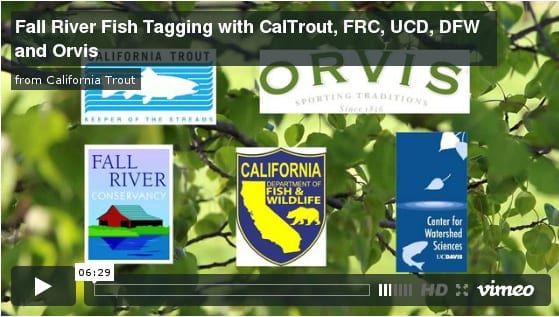A CalTrout Video: Protecting and Restoring Trout On The Fall River
California’s spring creeks provide critical coldwater habitat to its coldwater species, and no spring creek in the state is bigger than the Fall River.
It not only provides water for agriculture and supports an outstanding fishery (one we’re working to improve), it’s also a hedge against an uncertain future affected by climate change.
That’s why so much effort is being put into protecting and restoring this amazing fishery, and why CalTrout, The Fall River Conservancy, Orvis, California Department of Fish & Wildlife, and the UC Davis Center For Watershed Sciences partnered on a fish tagging project:
Fall River Fish Tagging with CalTrout, FRC, UCD, DFW and Orvis from California Trout on Vimeo.
It seems the Fall River’s trout have adapted to the cold, steady year-round flows by spreading their spawning activity over a nine-month period, and this study was designed to learn more about this unique behavior.
CalTrout places a very high value on the state’s spring creeks, as do our partners. More to come on spring creeks.






3 Comments
It is good to see all of these organizations working together for a common goal. The video didn’t comment (or I didn’t catch it) as to how long this study will take place. Please post a link to further information on this study. I would be curious to know more about it as information comes in.
Thanks,
Greg
Thanks Greg,
We plan to tag another 250 fish in July and likely more in October. The project will be ongoing year after year as long as we can keep it funded. Each consecutive season we will install more arrays (the antennas that read the fish tags) throughout the Fall River system. This season we have funding for four arrays (Thousand Springs, Spring Creek, Lava Springs, and maybe Island Bridge). Eventually, we’ll have all the major tributaries and potential spawning areas set up with arrays to track fish as they migrate. We will keep you posted as the data begins to come in.
Drew
This is a FEEL GOOD! THANK YOU!